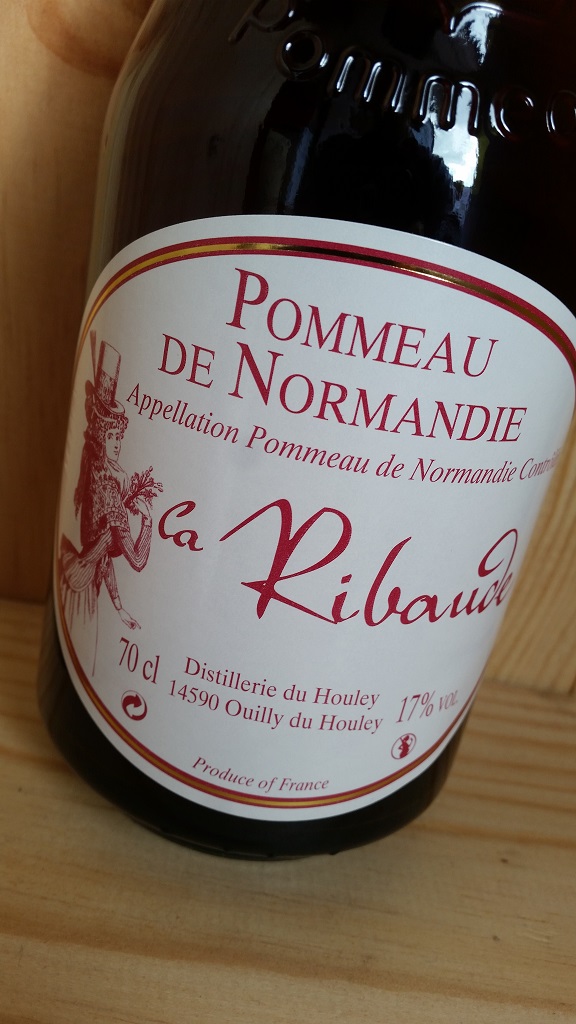Last date for Christmas orders is Tuesday 16th December. We will still despatch orders placed after the 16th but cannot guarantee that orders will be delivered by Christmas. Dismiss
Skip to content
Buy Pommeau at Fareham Wine Cellar here.
What is Pommeau de Normandie? Pommeau is a French Mistelle, an alcoholic beverage made by blending unfermented apple juice with apple brandy (Calvados). This process, called mutage, stops the juice from fermenting and creates a sweet, fruity drink that is classified as an aperitif.
Pommeau has been made for many years by cider and Calvados-producing families in Normandy, France, but it was really only formalised very recently. In the 1970s group of producers banded together, and by 1981, Pommeau de Normandie was given a special dispensation allowing it to be sold to the public. However, it was not until 1986 that the conditions for producing Pommeau de Normandie were formally laid out and it finally acquired its Appellation d’Origine Contrôlée status on April 10th 1991.
There are now three Pommeau AOCs – Pommeau de Normandie was followed by Pommeau de Bretagne (Brittany) and Pommeau de Maine in 1997 and 1999, respectively. All three regions produce Pommeau with slightly different character, sweetness and flavours.

A Mistelle is produced by adding alcohol to non-fermented or partly fermented grape juice, or in this case, a brandy derived from apples (this will be a young Calvados d’Appellation Contrôlée) and apple must. The addition of alcohol to the fruit juice stops any fermentation so that there is still plenty of sugar left in the mistelle; therefore, they are usually quite sweet.
Famous Mistelles from other areas include Pineau des Charentes, Floc de Gascogne, Macvin from the Jura, and Ratafia de Champagne.
It is made by blending two-thirds unfermented cider (mout, French, or must) to one-third of Calvados that is one year old. This process is known as “mutage”. The resultant blend is usually between 16 and 18% ABV. The blend is then put into large oak barrels of 400 litres (these are usually four or five years old and have to be at least 14 months by law) and left to age for about thirty months. After ageing, it is normally bottled at 17% ABV.
Pommeau de Maine differs slightly from the other in that it must be aged for a minimum of 21 months and has a higher minimum unfermented sugar content.

Pommeau is generally served slightly chilled before a meal as an aperitif and is usually served in a Port or Sherry glass like a copita. However, it is a very versatile drink and can be used as a cocktail ingredient, such as “Le Normande”:
Cheeses: Soft, creamy cheeses like Camembert (a Normandy classic) or Brie pair beautifully, as Pommeau’s apple sweetness enhances their richness without overwhelming. Blue cheeses like Roquefort or Gorgonzola also work, with the drink’s acidity cutting through their pungent intensity.
Pork Dishes: Roast pork, pork chops with apple sauce, or charcuterie (think saucisson or pâté) marry well, as the apple notes in Pommeau echo the fruit often paired with pork in Norman cuisine.
Seafood: Try it with scallops, shrimp, or smoked salmon; the drink’s crisp acidity complements seafood’s delicate flavours, especially in creamy or buttery preparations.
Desserts: Apple tarts, tarte Tatin, or caramel-based desserts like crème brûlée highlight Pommeau’s baked apple and toffee notes. It also pairs with dark chocolate or almond pastries for a sweet-salty balance.
Foie Gras: The luxurious richness of foie gras is elevated by Pommeau’s sweet-tart profile, a classic French pairing that balances decadence with freshness.
Nuts and Dried Fruits: Almonds, walnuts, or dried apricots and figs complement the drink’s nutty and fruity undertones, ideal for a cheeseboard or aperitif spread.
Pommeau is a great ingredient for cooking and can be used for making sauces for pork, chicken and fish dishes. It is also good to use for making a jus when deglazing a pan.
For more information, visit the IDAC (Interprofession des Appellation Cidricoles) website
Related Posts